Greenwich prime meridian
Thursday, 29th November 2007 by James Turnbull
The equator, or latitude 0, separates the northern and southern hemispheres of the globe. Defined as the middle point of the two geographic poles, there's no way anyone could argue about its location.
However the meridian - longitude 0 - has no scientific definition so could basically be anywhere you like on the planet.
The most widely accepted meridian was defined at the Royal Observatory in Greenwich, London. However, even here the meridian has shifted about a bit.
18th century astronomer James Bradley's meridian is still shown on UK maps today, but has otherwise mostly been forgotten. The much more famous meridian, which is now used as the base point for all the world's time zones, was defined by George Airy.
Airy's prime meridian was chosen using the very scientific system of setting up his equipment in the observatory as close as possible to Bradley's equipment, but without getting in the way!
Two miles directly north of Greenwich, on the banks of the River Thames, Airy's meridian is marked out by a line of trees.
Also just to the north of Greenwich is a millennium sundial, which is a few metres off the meridian. Purportedly this was a construction error and the clock will always be wrong by about 8 minutes!
If you were to take your satnav device along to the observatory at Greenwich, or just set longitude to 0 in Google Earth, you'll find yourself outside the observatory at this seemingly insignificant point, 102.5 metres east of the prime meridian.
That's because Google Earth, and your satnav, use the International Reference Meridian, which was defined much later by observing stars from many different countries.
So readers, if you were defining a new meridian, where on the globe would you put it?
More information on the prime meridian, the world geodetic system, how it's used in Google Earth and the prime meridian at Wikipedia.
Thanks to LionelB, Reagan Blundell, Sly Golovanov, Frank Taylor & Roy G. Ovrebo.
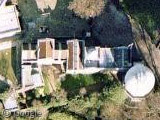
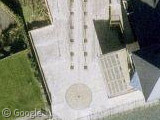
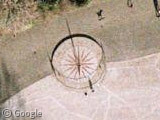
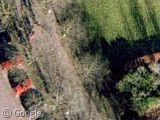
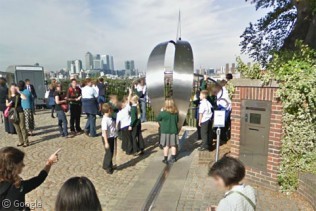
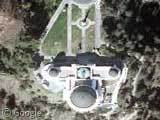
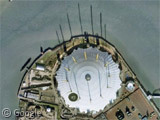
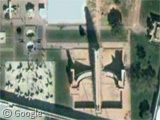
I thought the Equator was halfway between the rotational north/sourth poles, not the magnetic.
Actually, since both wander a bit, it’s more of a semi-arbitrary fixed reference than really the midpoint between the poles.
As for the prime meridian… it’s fine where it is now, but if it required redefinition, how about something like: Once we have established what we mean by the “poles”, how about something like “A ‘Meridian’ shall be the intersection between a half-plane bounded by the line connecting the poles and the geoid of the Earth. A point on such a half-plane shall be called “above”, “on”, or “below” the Meridian if it is outside, on,or inside the geoid respectively. The ‘Prime Meridian’ is the Meridian that the center of the Sun is above at 2000-01-01T12:00:00 TAI exactly.”
Somewhat related: the Mitad del Mundo just outside Quito, Ecuador. It’s a big monument that marks the place where the equator was thought to be at the time. Turns out it’s nearly 800 feet away from the real equator.
I’d leave the meridian where it is, but redefine the unit “degree” to be 2pi/359. That way, the number of degrees in a full circle would be 359 – a prime number. Thus, longitude measured in full degrees with multiplication and addition would form a finite field! Wouldn’t that be awesome and useful!?
No.
I’m sorry but this seems all a little beyond me too technical, especially after a couple of Brandy’s!! I did find something sort of interesting, if you zoom right into Alison’s link you get a very weird horizontal effect, either that or its the booze talking
https://www.googlesightseeing.com/maps?p=&c=&t=k&hl=en&ll=-0.001998,-78.456121&z=19
Like Nico I would redefine the degree, but I would make it 2pi/1000 to have metric degrees. Then I would move the meridian so it passes through Swatch Headquarters in Biel, Switzerland. I’m sure the new system would be an instant and ongoing success….
myquealer: let’s call them “internet degrees”
How about the meridian through the tip of Mount Everest. The highest point on earth would be difficult to argue over.
I’d put the Meridian through the place on the earth where it would cross the most land. Maybe that’s down the middle of Africa? It would be cool to be able to visit the point where the Meridian crosses the Equator (currently in the sea somewhere?).
Peter: Actually, it would be rather easy 🙂
How do you define “height”? ASL? Farthest away from the Earth’s centre? Highest monotonically increasing slope?
All those would yield different results, and I’m sure there still are other possibilities.
The old esoteric arguments worked off a form of omphalos concept, that each city had is own prime meridian defined by its own gnomon, a founding stone, which in London’s case has shifted around a bit but is currently enshrined in the wall of a bank opposite Cannon Street Station. The reason the UK meridian is Greenwich was a combination of the Tudor Royal Palace at the foot of the hill (which is accidentally better located for the modern zero) and the three geographic promontories of the bowl of hills surrounding London which overlook the Thames, which are Blackheath Point, the Observatory, and St Luke’s, Charlton. For all that you s Of these, the first faces the City and is not much use for shipping, the last was comandeered by the church so long ago the astronomers never got a look in, which only left the Observatory site itself. The reason it was needed on high ground was to provide maximum visibiity for the captains of departing ships, who would delay setting the timepieces their navigation depended on until the absolutely last instant possible, to keep as much accuracy as could be gained. Each day, a massive ball drops on a pole on the roof, indicating noon for this reason. Blackheath Point is in itself interesting as it’s the closest vantage point overlooking London itself, and so has seen a number of invaders set up there, from Julius Caesar to Wat Tyler and Jack Cade, both of whom were revolting peasants at various times.
Further to my last (bedevilled by an aberrant cup!), the supposedly inconsequentlial field a hundred meters east of the Meridian centre is actually quite important in the recent history of the Marathon, as it is there that the local kids, inspired by the fundraising of the adults in the London Marathon which starts on the avenue alongside, held a fund-raising jog in 1984, which was taken up by the local schools the next year and then became the Mini Marathon phase of the London Marathon, which in its turn has inspired a number of imitations elsewhere. I know, ‘cos I organised that first jog!
I would put it through the Royal Observatory in Edinburgh. 😀
You know what really annoys me about time zones? That the French are always one hour ahead of the UK even though they’re on the same longitude pretty much.
I was trying to think of a way to account for tectonic drift on a global scale, but then I decided that mrb had the right idea all along. Barkeep, more brandy!
Hmm. Looks like the good burgers of Peacehaven were a little out when the built their Prime Meridian Obelisk at View Placemark (50.7897,-0.00160364)
Another good reason to keep the Greenwich Meridian is the international date line. I believe it was one of the decieding factors in the international agreement to use Greenwich in the beginning, when we went from a meridian in every capital city to just one. The International date line runs roughly along 180 degrees, with a few kinks to go around islands so that generally land masses and island groups are on the same date.
The current location of the date line is one of the only places it can be and not pass through any major land mass north to south. So Greenwich is actually a very logical place to have the meridian on the other side of the world.
Wikipedia – International Date Line
Three items if you please:
New Orleans is at 90 W by 30 N. Easy to remember and easy to visualize on a globe. For fifty plus years I’ve used the location as my prime map point to locate other places in North America estimating time and distance. It has served me well. I wouldn’t recommend it as candidate for relocating the prime meridian but it is a handy reference point.
Is it in the London area, north, south or a mythical location like Shingra La? I saw the movie so there are pictures but no maps.
That’s right, I’m bored so I’m picking on you.
Thank your for your indulgence and courtesy. Tom.